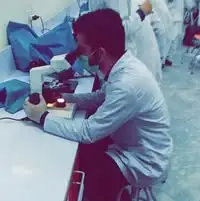25/12/2022
✓BLOAT🐄🐄
_______________
Bloat is an over distention of the rumen and reticulum with the gases of fermentation.Tympany is caused by a physical or functional obstruction or stenosis of esophagus resulting in failure to eructate .
In adult animals, free-gas bloat is less frequent and usually more acute because disturbances of the adult rumen tend to be more rapid and severe .Prodigious volumes of gas are continually generated in the rumen through the process of microbial fermentation. Normally, the bulk of this gas is eliminated by eructation or belching, which ruminants are spend a lot of time doing. Certainly, anything that interferes with eructation will cause major problems for a ruminant. The problem, of course, is called ruminal tympany or, simply, bloatBloat is the overdistension of the rumen and reticulum with gases derived from fermentation. The disorder is perhaps most commonly seen in cattle, but certainly is not uncommon in sheep and goats.
✓ Clinical Signs.
_______________
2There is discomfort and the animal may stand and lie down frequently, kick at its abdomen and even roll.
3. Frequent defecation and urination are common.
4. Dyspnea is marked and is accompanied by mouth breathing, protrusion of the tongue, salivation and extension of the head.
5. The respiratory rate is increased up to 60/min.
6. Ruminal contractions are usually increased in strength and frequency in the early stages and may be almost continuous,
✓ Treatment and Control
_______________________
Bloat is a life threatening condition and must be relieved with haste. For animals in severe distress, rumen gas should be released immediately by emergency rumenotomy. Insertion of a rumen trochar through the left flank into rumen is sometimes advocated, but usually not very effective unless it has a large bore (i.e. 1 inch), and is often followed by complications such as peritonitis.
In less severe cases, a large bore stomach tube should be passed down the esophagus into the rumen. Free gas will readily flow out the tube, although it may need to be repositioned repeatedly to effectively relieve the pressure. In the case of frothy bloat, antifoaming medications can be delivered directly into the rumen through the tube; the animal should then be closely observed to insure that the treatment is effective and the animal begins to belch gas, otherwise a rumenotomy may be indicated.
Use mineral oil
Charcoals
Carminatives.

 I'm a veterinary doctor. Being a veterinary Dr. it's my duty to educate people about pets care.
I'm a veterinary doctor. Being a veterinary Dr. it's my duty to educate people about pets care.